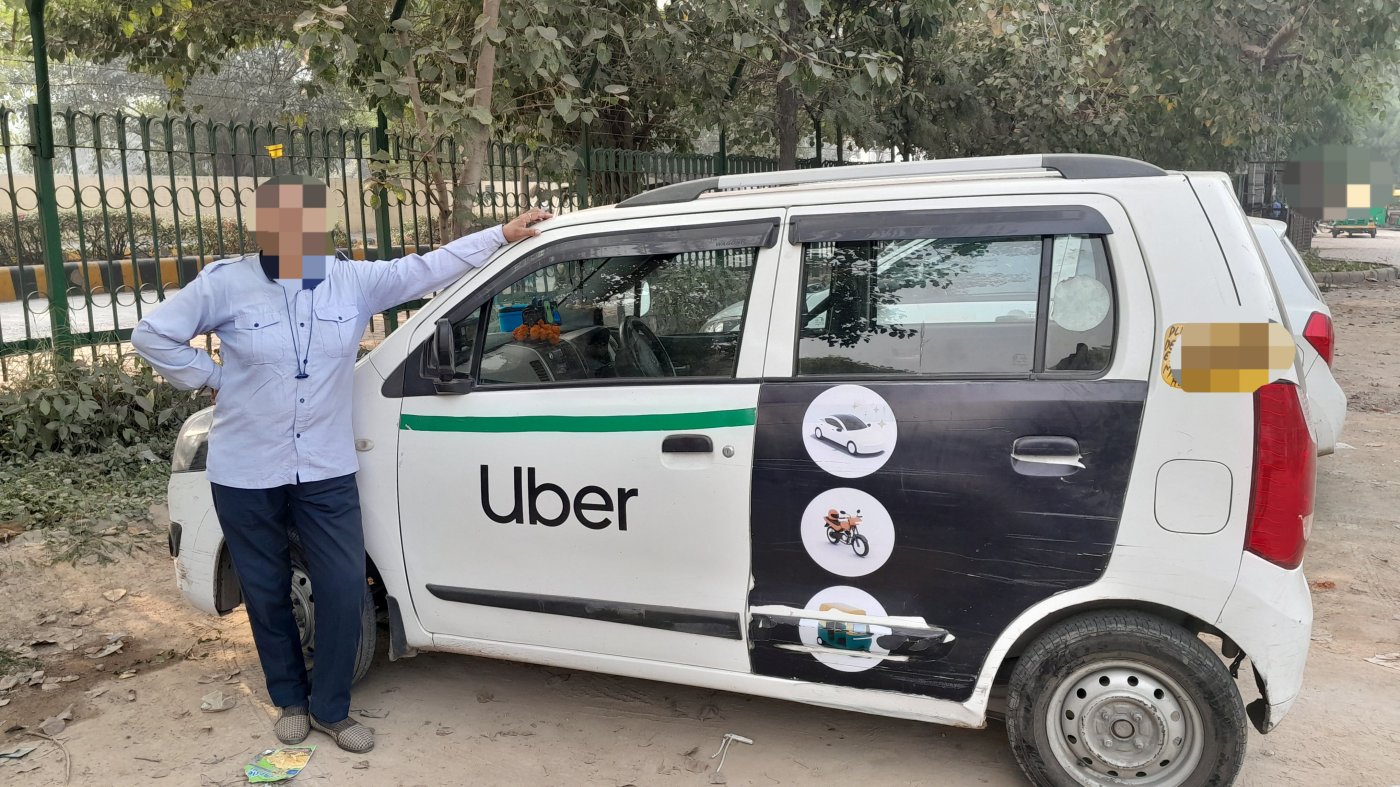New Delhi: At around 3 am on 9 January 2023, Uber driver Priyanka Devi, 31, was on her way to pick up a passenger near North Delhi's Kashmere Gate area, when a brick smashed into her car window.
As she stopped, two men tried to open the car. “I gave them my phone and daily earnings, but when they tried to snatch my car keys, a scuffle arose,” Devi, a soft-spoken woman wearing her driving uniform with visible injuries on her neck, told Article 14.
When she resisted, the men slashed Devi’s neck with a broken beer bottle and left her bleeding on the roadside, crying for help for almost an hour, till a police patrol took her to a nearby hospital.
Devi said she called Uber’s general helpline several times and pressed the panic button—mandated by law to be installed inside commercial taxis—but there was no response.
Devi was jobless for months due to the neck and head injuries. She alleged that she did not get any insurance money nor any legal or financial support from the platform company.
“I found myself without any financial support due to the injuries,” said Devi, a single mother. “I cannot forget the challenging circumstances I went through without any help from Uber.”
No Country for Women Cabbies
Devi is one of approximately 1.7 million women gig workers in India, a number expected to rise to 23.5 million by 2029-30, according to a June 2022 policy brief by the government’s think tank Niti Aayog. The brief described gig or platform workers as those who earn outside traditional employer-employee relationships by performing tasks on app-based platforms.
Platform workers such as Uber and Ola drivers do not have health insurance, paid leave, job security, or employment contracts—making it easy for companies to evade accountability.
These challenges are heightened when the driver involved is a woman, of which there are now an estimated 2.6 million licensed drivers engaged in professional driving, in a country of over 160 million valid license-holders, according to the 2015-16 Road Transport Yearbook (the latest available data).
While specific data on the number of women registered as drivers with Ola and Uber is not provided, in 2015, Ola announced that it would add 50,000 women drivers to its platform over three years. The same year, Uber also announced that it would train 50,000 women taxi drivers in India by 2020. It is uncertain how are currently employed.
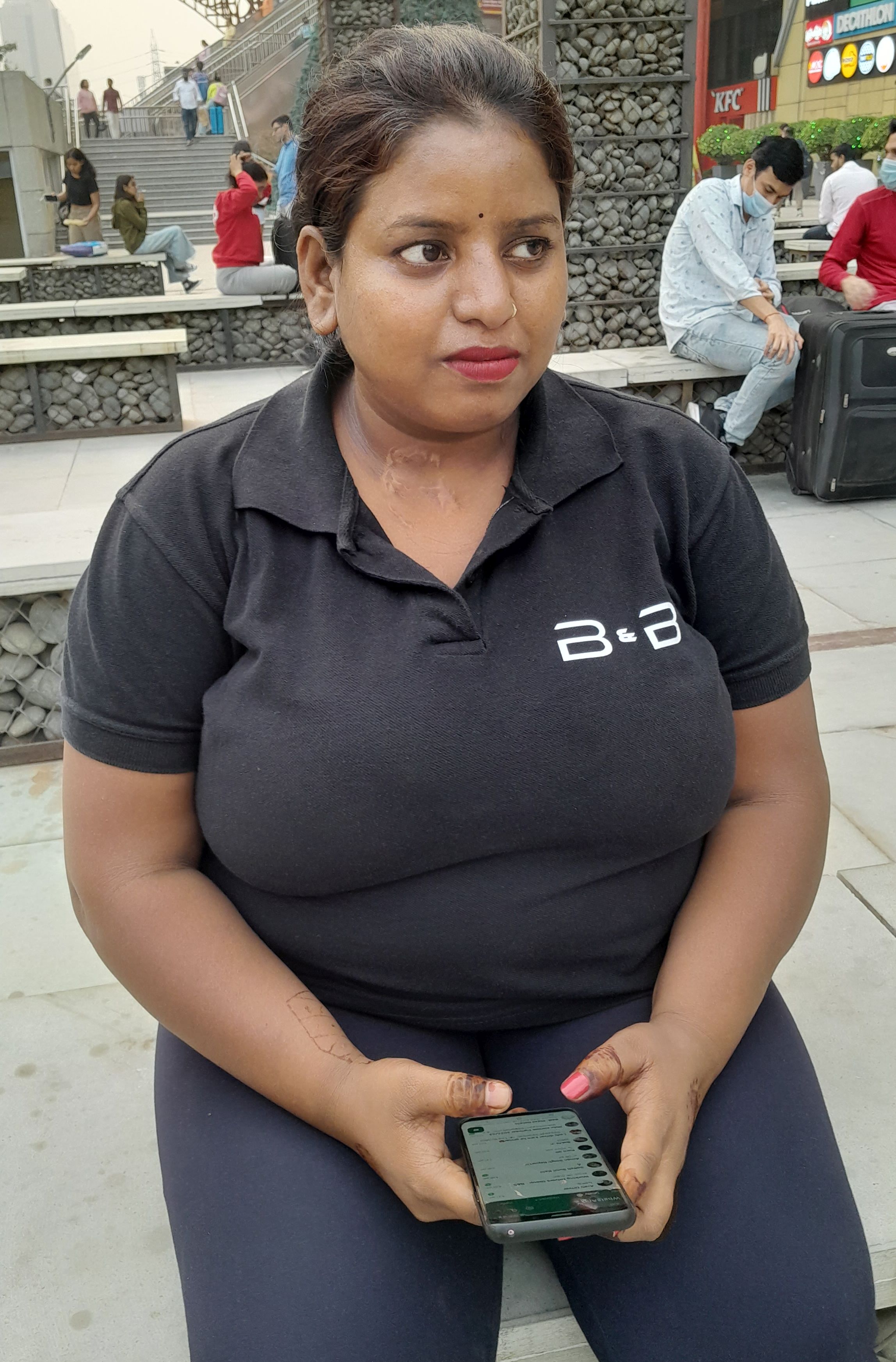
Legal Lacunae
Devi said she called Uber multiple times after the attack but received a call from the Uber team only after two days.
“It was only after the media (here and here) highlighted the issue that they [Uber] called me,” she said. “They told me that my medical expenses would be covered.”
Eleven months later, Devi—a single mother of two daughters— claimed that she had not received any form of compensation, including monetary ones.
Devi said Uber asked her to send the company her bank details on the Uber app.
“I also sent them medical expenses for injuries,” she said. “After that, they told me that around Rs 2,000 were sent to my Uber account on 30 January 2023, but I never received a single paisa.”
“I sent them my bank statement, screenshots, and screen recordings of my bank account and everything else they asked for as evidence.”
Unwilling to be named, an Uber spokesperson refuted the claims made by Devi.
“We connected with the driver soon after the incident to check her well-being,” said the spokesperson. “Her injury-related medical expenses were covered under Uber’s on-trip insurance, provided through a third-party insurance partner. We also supported her financially to cover for partial earnings lost during her recovery.”
The Indian Federation of App-based Transport Workers (IFAT)—a trade union federation of ride-sharing and other gig transport worker—raised Devi’s matter with Uber, the ministry of transportation, the ministry of law and justice, and the Delhi Commission for Women.
“We only heard once from the law ministry stating that the matter has been forwarded,” said Shaik Salauddin, National General Secretary and co-founder of IFAT. “There has been no response since.”
Article 14 sought comment over email on 6 December from the secretary of the ministry of law and justice, and chairperson of the Delhi Commission for Women. We sent follow-up questions and a reminder on 13 December, but there was but no response.
We also sent emails to the ministry of transportation, the ministry of law justice, and the Delhi Commission for Women, but there was no response.
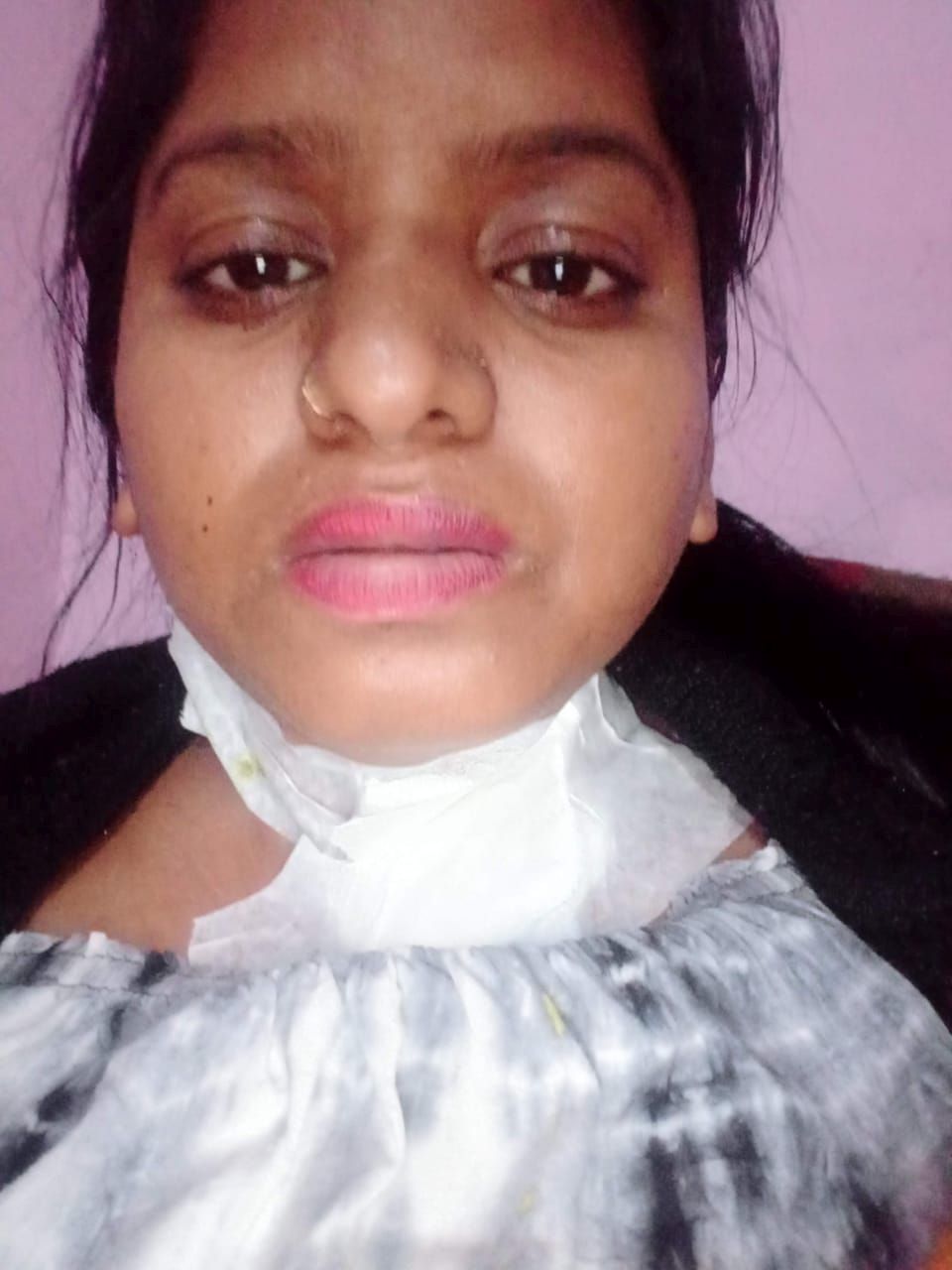
The Ignorance Of Drivers
Salauddin said that most of the time, ride-hailing drivers do not even know about third-party insurance or the concept of compensation.
“While there are formal affiliations with insurance companies on record, the details of these arrangements lack transparency,” said Salauddin. “Platform companies fail to establish clear and comprehensive insurance policies and ensure that the drivers are aware about their terms and conditions.”
The absence of formal employee-employeer relationship in the gig economy also creates ambiguity in accessing legal protection mechanisms such as the Sexual Harassment of Women at Workplace (Prevention, Prohibition and Redressal) Act 2013, commonly known as the POSH Act.
The POSH Act places a legal obligation on employers to prevent and prohibit sexual harassment in the workplace and set up an Internal Complaints Committee (ICC) and a redressal mechanism for the aggrieved individual.
According to the 2015 Handbook On Sexual Harassment of Women at Workplace by the ministry of women and child development, an “aggrieved woman” mentioned in the section on “extended workplace” in Chapter 1 of the POSH may even be “visiting a workplace” in addition to being a “contract worker/probationer/trainee/apprentice/called by any other such name”.
However, platform companies such as Uber and Ola lack the mandatory procedures outlined in the POSH Act and have not published any workplace harassment guidelines on their websites.
Chiara Furtado, a researcher on labour and digitalisation at the Centre for Internet and Society, said that ig workers were not recognised as employees, but as independent contractors.
“Thus, platform companies, working as faceless entities, can get away without having an internal complaints committee for grievance redressal,” said Furtado “Not just safety—whether it's accessibility to public washrooms or finding time for meals, the policy structure does not consider any of the challenges faced by women. They consider women as a liability.”
Non-Responsive Panic Button
On 5 December 2014, a 27-year-old woman was raped by an Uber driver while she was returning to Delhi in a cab from Gurgaon. This incident led to the months-long ban imposed on the cab aggregator by the Delhi government.
On 25 October 2018, the ministry of road transport and highways ordered all public service vehicles, except two-wheelers, three-wheelers and e-rickshaws, be fitted with a vehicle location tracking device (VLTD) and a panic button.
A panic button, when pressed, triggers an alert to the local police providing an emergency communication option for passengers unable to use smartphones or in-app safety features. Every five seconds, an alert is transmitted to servers overseen by the transport department and then, these alerts are promptly forwarded to the state Emergency Response Support System at 112.
A senior transport ministry official said the integration of panic alerts with the Delhi police control room’s emergency number, 112, and its system has not been executed correctly.
In July 2022, The Indian Express reported that the panic button was absent or did not work in 48 of 50 rides surveyed.
Out of eight women ride-hailing drivers Article 14 spoke to, five said that they had tried to use the panic button at some point, but it did not work.
Uber and Ola driver R* said she preferred accepting rides at night, like many other drivers, because of the availability of their rented car during that period.
But this increases safety risks, particularly for women drivers. Refusing to rely on policy measures, many women cab drivers carry pepper spray and wrenches, and have even taken up self-defence skills like karate.
Uber has an in-app emergency button accessible on both rider and driver applications. It gives the option to the users to call the local police. Additionally, Uber has a safety helpline that can connect the user with a support agent. But unlike the panic button, these functions are only accessible through a user’s phone.
When three customers made sexually suggestive remarks to Sheetal Kashyap, a 49-year-old driver, she simply asked them to get off once she reached an area she considered safe, instead of pushing the panic button in her car or Uber’s in-app SoS button.
“The three men constantly asked me why I wasn’t scared of driving late into the night, and what could I do if someone were to rape me,” said Kashyap, who is also the vice president of the IFAT. “In the past, I had pressed the panic button and used Uber’s in-app SoS button, with no response. I knew no one would come to my rescue.”
Women ride-hailing drivers told Article 14 that the Uber team rarely contacted them even when they used the in-app emergency button.
The Uber official who Article 14 spoke to emphasised that the company has “equitable policies for riders and drivers”.
“Women drivers on the platform have access to similar safety features including a safety support via phone, the in-app SOS button, the ability to share ride details, and RideCheck,” said the spokesperson. “Every complaint is dealt with utmost importance and penalties (for a client) may include loss of access to the Uber app.”
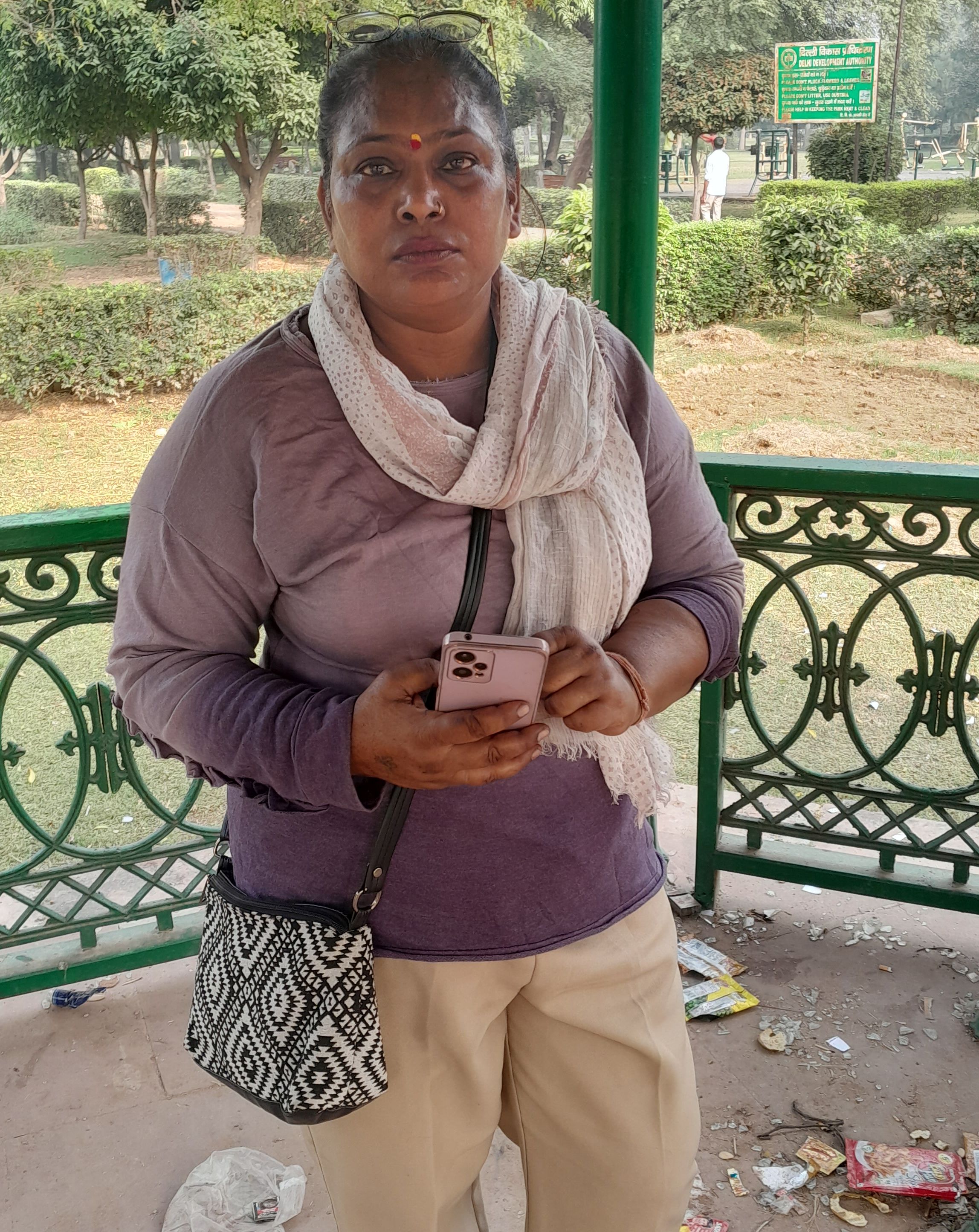
Discouraging Protest
Given such assurances, the treatment meted out to women drivers who had faced such safety issues —and protested would be surprising.
On 19 December, 2022, December 19, 2022, Kashyap, along with hundreds of other women gig workers, gathered at a Delhi protest site, Jantar Mantar to demand Rs 2,500 as a “minimum business guarantee”, implement a social security code, gig and platform workers guidelines, and motor vehicles aggregator guidelines.
A few days later, following media reports about these protests, Kashyap realised that her Uber ID had been blocked, along with that of ten other women who had participated in the gathering.
“They reasoned that we had low ratings or received negative feedback, which was a complete lie,” alleged Kashyap, who added that her Uber ID remained blocked, even as some of her compatriots' IDs had since been restored.
The spokesperson for Uber refuted Kashyap’s claim, stating that no driver IDs were blocked “in relation to the protest”.
The Gender Demon
Physically defending oneself against a drunken, misbehaving ride customers, common as they are, is one thing. But how does one battle the omnipresent threat of casual sexism?
Uber and Ola driver S*, 52, said many customers routinely look down upon women taxi drivers. “Disapproving looks and casual remarks on how they would ‘never reach’ their destination on time are an everyday affair,” she said.
S also mentioned that confronting misbehaving customers frequently led to lower ratings or negative feedback for rides. According to S, this, in turn, had repercussions on their performance-based incentives, discouraging drivers from reporting such unpleasant incidents.
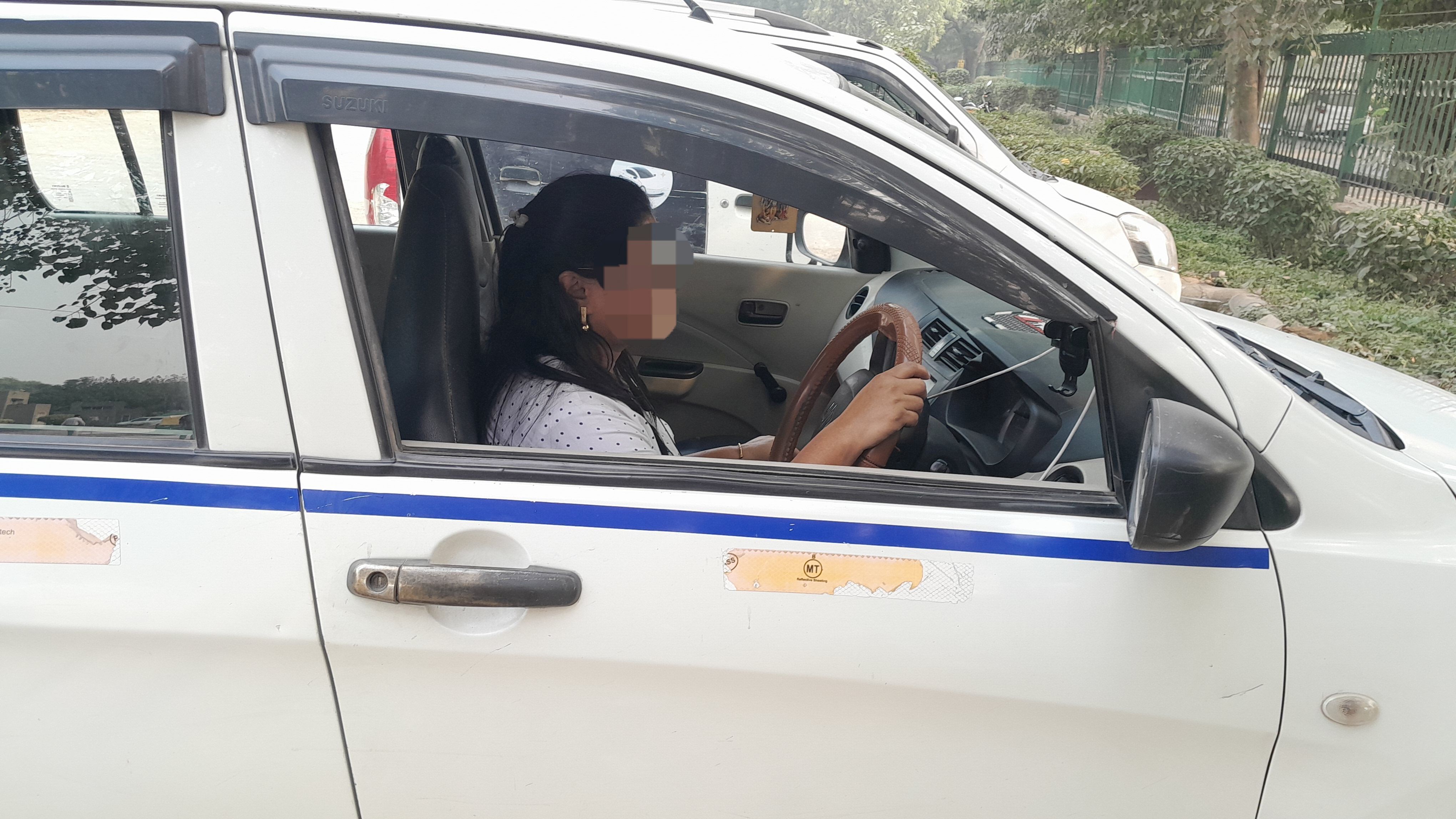
Seeking A Solution
Aditi Surie, senior consultant at the Indian Institute for Human Settlements, a think tank, said it was “exceptionally challenging” to encourage the retention of women in the transport sector, highly dominated by men, particularly within the informal workforce.
“The problem with companies like Uber and Ola is that they're highly commodified platforms,” said Surie. “While women drivers are encouraged by the business, there's no effort to put safety mechanisms in place to ensure the protection of platform drivers, even for men, forget women!”
Devi, the driver whose story we quoted at the start, quit working for Uber and Ola in April 2023 and is now a driver with a women-only ride-hailing startup Bold and Beautiful, with women drivers catering to women customers or male customers accompanied by a woman. “It feels a lot safer,” Devi said.
Kashyap is now a private driver and is busy unionising women ride-hailing drivers to create a safe and equitable workspace. Both R* and S are still working with Uber and Ola and looking for some way out to continue driving without facing the gendered challenges.
“We were all made to dream of independence by Uber and Ola, who referred to us as partners,” said Kashyap. “Unfortunately, we later realised that what was promised to us was, in fact, a golden cage that only confined us.,”
*Identities withheld on request
(Aman Singh is an independent journalist based in New Delhi. He covers the issues related to tech, labour, health and social justice.)
Get exclusive access to new databases, expert analyses, weekly newsletters, book excerpts and new ideas on democracy, law and society in India. Subscribe to Article 14.

